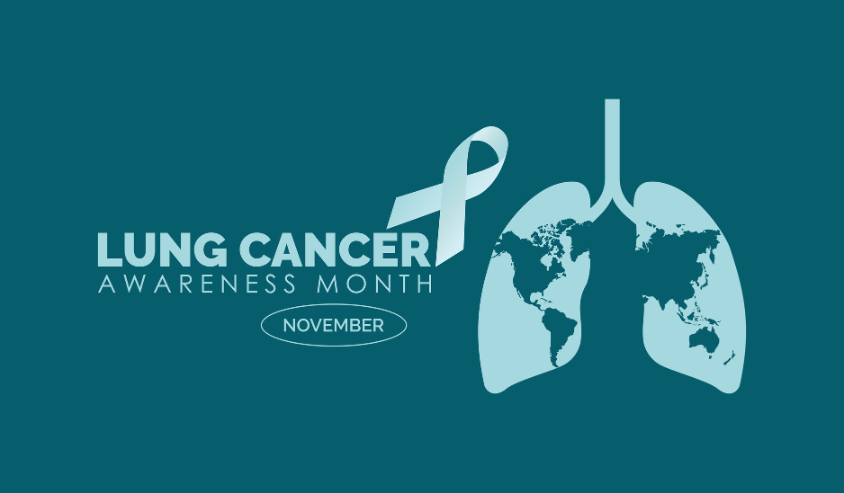Every November, Lung Cancer Awareness Month invites us to learn, support, and make practical choices that care for our lungs. While we often focus on the major risk factors like smoking and air pollution, there’s one everyday habit that gets overlooked: staying well-hydrated. Below, let's find out how something as simple as drinking clean water plays a surprising role in protecting your lungs.
Why Lung Cancer Awareness Month Matters

Every November, Lung Cancer Awareness Month serves as a global call to action, focusing our attention on awareness, early screening, and support for those affected by this devastating disease. As one of the leading causes of cancer-related deaths worldwide, with over 2.2 million new cases diagnosed annually, the need for proactive health measures is more urgent than ever. This month-long initiative encourages education on risks and symptoms, reminding us all to prioritize our respiratory well-being.
The movement began as a focused effort in the US in 1995 and has since grown into a powerful global campaign. Advocacy groups, patients, and medical professionals unite to fund critical research and champion policies that support early detection, which is key to improving survival rates. This collective effort culminates on November 17, International Lung Cancer Day, a significant date for the community to come together in solidarity and honor the millions impacted by the disease. This annual focus provides a vital platform to share life-saving information—including simple, powerful habits like proper hydration that support overall lung health.
How Proper Hydration Protects Your Airways

While it may seem simple, the link between drinking water and breathing is scientifically proven. Leading health organizations, including the American Lung Association, emphasize that proper hydration is fundamental to respiratory health. Scientific research consistently shows that staying hydrated helps keep the protective mucosal linings in your airways thin and moist, making it easier for your body to clear out irritants and reducing the risk of respiratory infections.
Your lungs are a sophisticated filtration system, and water is the essential fluid that keeps that system running smoothly. Here’s how it works:
- It Thins Mucus: Adequate hydration ensures the mucus lining your airways remains thin and fluid. This allows tiny hair-like structures called cilia to effectively sweep out inhaled debris like dust, pollen, and pollutants. When you're dehydrated, this mucus becomes thick and sticky, trapping particles and creating a breeding ground for bacteria, which increases the risk of irritation and infection.
- It Supports Efficient Breathing: By keeping the entire respiratory tract moist, from your nasal passages down to the deepest parts of your lungs, water helps reduce inflammation and makes the act of breathing feel easier and more comfortable.
So, how much water should you drink? The general recommendation for adults is around 2.7 liters (for women) to 3.7 liters (for men) per day, but this can vary. The best way to ensure you're getting enough is to build consistent habits. Here are a few practical tips:
- Keep a water bottle with you throughout the day as a constant visual reminder.
- Start your morning with a large glass of water before you have coffee or tea.
- Set reminders on your phone or use an app to prompt you to drink every hour.
- Eat water-rich foods like fruits and vegetables to supplement your fluid intake.
Why Water Quality Helps Hydration

While drinking enough water is essential, the quality of that water plays a key role in building healthy habits. Simply put, people are more likely to drink water consistently when it tastes and smells clean. A high-quality water purifier improves your home’s tap water, which in turn supports your hydration goals.
Modern water purifiers can:
- Improve taste and odor by effectively reducing chlorine and other chemicals that can make tap water unappealing.
- Reduce harmful contaminants, removing substances like heavy metals (e.g., lead), pesticides, and other dissolved solids from your drinking water.
- Support healthy hydration habits by making water more enjoyable to drink for the entire family, encouraging everyone to reach their daily intake goals.
- Lower costs and reduce waste by eliminating the need for single-use plastic water bottles.
Among the various purification methods, Reverse Osmosis (RO) technology is widely regarded as the gold standard for achieving the highest level of purity, setting the stage for optimal health.
How Reverse Osmosis Helps Your Daily Sips
The secret to drinking more water is making every sip a pleasant experience. Reverse Osmosis (RO) purifiers excel at this by transforming your tap water into exceptionally clean, great-tasting water. Widely considered one of the most effective water purification technologies available, an RO system works by pushing water through a semipermeable membrane. This process is incredibly precise, capable of removing up to 99% of total dissolved solids (TDS).
This includes impurities that affect both safety and taste, such as:
- Heavy metals like lead and mercury
- Chlorine, which often causes a chemical taste and odor
- Bacteria, viruses, and other microorganisms
- Pesticides, fluoride, and even trace pharmaceuticals
By stripping away these unwanted elements, an RO purifier delivers water in its purest form. This not only eliminates unpleasant flavors but also removes the burden on your body of having to process these contaminants. When your water is this clean and refreshing, staying hydrated no longer feels like a chore—it becomes a simple, enjoyable habit. This consistent hydration is the foundation for better overall health, which in turn supports a strong and resilient respiratory system.
Choose the Right Water Purifier for Your Family's Needs

Every home is unique, and the best water purifier for you will depend on factors like your family's size, local water quality, and budget. To make a confident choice, focus on a few key features that ensure both performance and peace of mind.
First, prioritize advanced filtration technology. A system built around Reverse Osmosis (RO) with multi-stage filtration offers the most comprehensive removal of a wide range of contaminants. It’s also wise to look for purifiers that have been tested and certified by reputable national safety agencies, which verifies the manufacturer's claims about performance.
Finally, consider how the purifier will fit into your daily life. A system that is easy to install and maintain, with helpful features like filter life indicators, will be a joy to use rather than a chore.
A system that expertly combines these qualities is the Bluevua ROPOT(UV) Reverse Osmosis Water System. It's a 6-stage filtration with UV light that removes contaminants while adding back healthy minerals, and its convenient countertop design requires no installation.
By choosing a certified, high-performance purifier, you are investing in a foundation for healthier living for everyone in your family.
Step Up for Lung Cancer Awareness This November

Awareness is powerful, but action is what creates change. Lung Cancer Awareness Month is the perfect opportunity to translate knowledge into meaningful support for the community. You don't have to make a grand gesture; even small, consistent actions can make a significant difference.
Ready to get involved? Pick one of these actionable steps and get the ball rolling today:
- Donate to reputable organizations that fund life-saving research, support patients, and advocate for early detection programs. Your contribution, no matter the size, helps fuel progress.
- Volunteer in your community by helping at local health fairs or community events. Your time and energy can help spread crucial information about lung cancer risks and preventative health.
- Share credible information online. Use your social media presence to share educational posts about lung health, including the surprising benefits of staying hydrated with clean water.
- Champion lung-healthy habits within your own circle. Encourage your family and friends to adopt healthier lifestyles, starting with the simple, foundational habit of drinking enough pure water every day.
Make Sips Easy
Good habits last when they're effortless. Set up water you like the taste of, keep it within reach, and tie sips to moments you already do — meals, meetings, or walks. Keep what works, drop what doesn't, and let the habit run in the background.





Leave a Comment
All comments are moderated before being published.
This site is protected by hCaptcha and the hCaptcha Privacy Policy and Terms of Service apply.